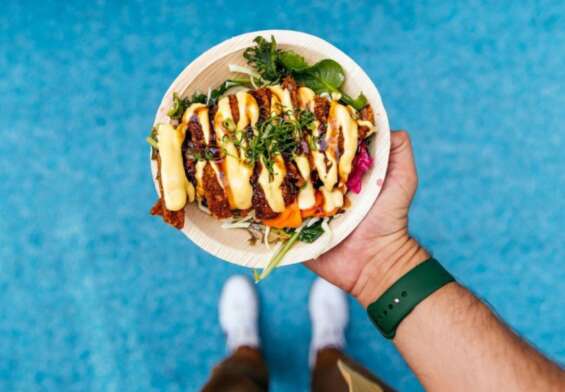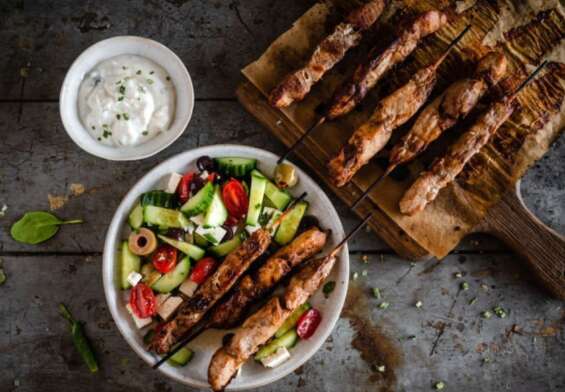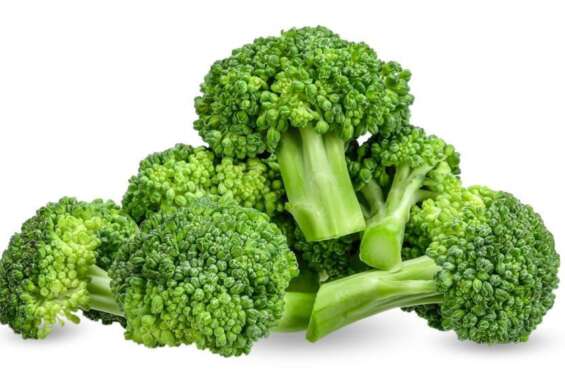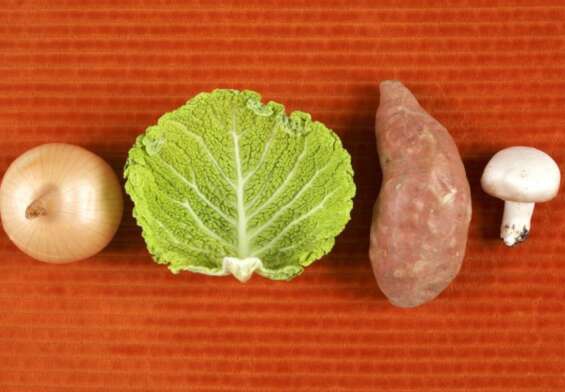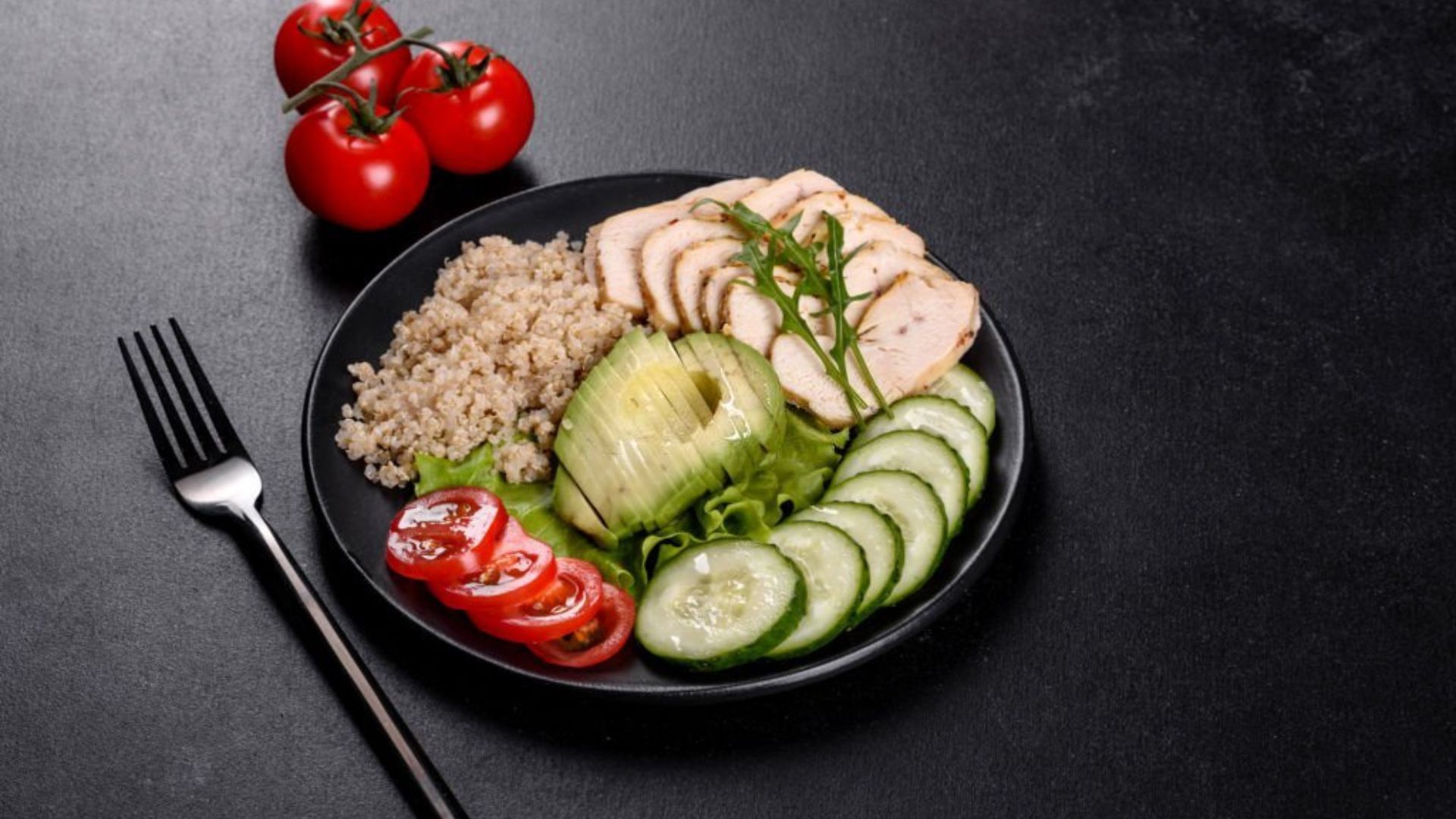
Zone Diet: Balance Your Macros and Achieve Optimal Health
The Zone Diet is a well-known and popular diet plan that has been around for decades. It is a low-carbohydrate, high-protein, and moderate-fat diet that focuses on controlling the balance of hormones in the body. It is based on the premise that by eating the right combination of carbohydrates, proteins, and fats, you can maintain a healthy hormonal balance and reduce inflammation. The Zone Diet is designed to help people lose weight, improve overall health, and reduce the risk of disease. It also emphasizes the importance of exercise and stress reduction. The Zone Diet has been shown to be effective for weight loss, and for improving overall health.
What is the Zone Diet and How Can it Help You Lose Weight?
The Zone Diet is the hottest new diet that is taking the world by storm! It’s like being in the ultimate state of zen – or at least that’s what the dieters would have you believe. The idea behind this diet is to eat a balanced meal of carbohydrates, proteins, and fats in the correct ratio of 40:30:30. This means that you should have 40% of your calories from carbohydrates, 30% from proteins, and 30% from fats.
This diet is said to help you lose weight by keeping your blood sugar levels stable and helping you maintain a healthy metabolism. It’s also said to reduce inflammation, which can help reduce the risk of chronic diseases. If you can stick to the 40-30-30 ratio, you can expect to see a decrease in your waistline in no time!
The Zone Diet is a great option for those looking to lose weight and stay healthy. It’s easy to follow and can help you reach your goals without too much effort. So why not give it a try? You might just find yourself in the zone!
What are the Benefits of a Zone Diet for Athletic Performance?
Athletes have been jumping on the bandwagon of the Zone Diet for years, and for good reason! Here are the top benefits of this eating plan for athletic performance:
- Increased Energy: The Zone Diet’s focus on high-quality proteins, healthy fats, and complex carbs can help provide sustained energy throughout the day and during training sessions.
- Improved Recovery: The Zone Diet’s emphasis on reducing inflammation can help athletes recover faster from strenuous workouts, allowing them to get back to their training sooner rather than later.
- Improved Concentration: Eating a balanced diet, as the Zone Diet encourages, can help athletes better focus and give their best performance.
- Better Sleep: Eating foods that are high in protein and healthy fats can help athletes fall asleep faster and stay asleep longer, allowing their bodies to recover and prepare for the next day’s training session.
- Increased Stamina: Eating the right foods can help athletes stay strong and energized for longer periods of time, allowing them to push their bodies to the limit.
So, if you’re an athlete looking for an edge in your performance, why not give the Zone Diet a try? It might just be the missing piece to your success!
How to Get Started on the Zone Diet: A Step-By-Step Guide
Step 1: Get Ready for the Zone
Are you ready to get “zoned in”? The Zone Diet is a low-carb, high-protein, moderate-fat diet that promises to help you lose weight and improve your health. But before you jump in, there are a few things you should know. So get ready to get zoned in!
Step 2: Get the Basics Down
The Zone Diet is based on the idea of “macronutrient balance”—eating the right ratios of carbohydrates, proteins, and fats. The recommended ratio is 40% carbohydrates, 30% proteins, and 30% fats. This means that you should plan your meals so that each one consists of around 40% carbs, 30% proteins, and 30% fats.
Step 3: Stock Up on Supplies
Once you’ve got the basics down, it’s time to stock up on the right supplies. To stay in the Zone, you will want to focus on lean proteins, healthy fats, and complex carbohydrates. Some of the best foods to include in your diet are lean meats, fruits, vegetables, nuts, and whole grains.
Step 4: Set Meal Goals
The Zone Diet recommends eating five small meals a day, rather than three larger meals. This helps to keep your metabolism running at an optimal level and prevents overeating. Try to plan your meals ahead of time to make sure you are sticking to the right ratios of macronutrients.
Step 5: Stay On Track
Once you’ve got your meal plan in place, it’s important to stay on track. Try to avoid temptations by planning ahead and making sure you have healthy snacks on hand. Also, keep in mind that the Zone Diet is not a quick fix—it takes time and dedication.
Congratulations! You’ve taken the first steps towards getting zoned in. Now that you’re armed with the basics, you’re ready to start your journey to a healthier, happier you. Good luck!
The Best Healthy Foods to Eat on the Zone Diet
Are you looking for a way to get healthy without sacrificing flavor? Look no further than the Zone Diet! Here’s a list of some of the best healthy foods you can eat on the Zone Diet that will not only help you get into shape, but also tantalize your taste buds.
- Avocados: Avocados are a great source of healthy fats, fiber and essential vitamins and minerals. Plus, they’re a delicious addition to salads, sandwiches and more!
- Nuts: Nuts are a great snack to have on the Zone Diet. They’re full of healthy fats and protein, and they come in so many varieties that you’ll never get bored.
- Berries: Berries are packed full of antioxidants and phytonutrients that are essential for good health. Plus, they’re delicious and make a great snack or addition to any meal.
- Salmon: Salmon is an excellent source of omega-3 fatty acids and protein, which are essential for good health. Plus, it’s delicious baked, grilled or smoked.
- Olive Oil: Olive oil is a great source of healthy fats and antioxidants, and it’s a great way to cook your Zone Diet meals.
- Spinach: Spinach is a great source of vitamins, minerals and dietary fiber. Plus, it’s delicious when cooked with a little olive oil or added to salads or sandwiches.
- Dark Chocolate: Dark chocolate is packed full of antioxidants and it’s a great way to satisfy your sweet tooth while staying healthy.
So, those are some of the best healthy foods you can eat on the Zone Diet. With this list, you can have your cake and eat it too – without sacrificing flavor or health. Enjoy!
How to Make Zone Diet Recipes That are Delicious and Nutritious
Tired of eating the same boring meals day in and day out? Well, if you’re following the Zone Diet, you don’t have to! With a little creativity and some flavor-packed recipes, you can whip up delicious and nutritious meals that are sure to tantalize your taste buds. Here’s how to make Zone Diet recipes that are both delicious and nutritious.
Step 1: Get your portions right.
The Zone Diet emphasizes the importance of portion control. When it comes to meals, stick to the “3-3-3” rule: three parts carbohydrates, three parts proteins, and three parts healthy fats. Measure out the appropriate portion sizes of each food group to ensure you’re getting the right macronutrient balance.
Step 2: Choose your ingredients wisely.
When it comes to the Zone Diet, not all carbohydrates, proteins, and fats are created equal. Opt for nutrient-dense, whole foods like lean proteins, unrefined carbohydrates, and healthy fats. Skip the processed, sugary, and fried foods.
Step 3: Get creative with your recipes.
You don’t have to stick to the same boring meals day in and day out. Get creative and come up with tasty recipes that combine nutrient-dense ingredients with flavorful seasonings and spices.
Step 4: Prepare with flair.
Meal prep can be fun and exciting! Play some music, light a scented candle, and use colorful dishes and utensils to make your meal-prep session as enjoyable as possible.
Step 5: Eat with gusto.
Finally, it’s time to enjoy your delicious and nutritious Zone Diet meal! Dig in and savor every bite. With the right recipes and flavors, you’ll be sure to enjoy every mouthful.
Now you know how to make delicious and nutritious Zone Diet recipes. So don’t settle for boring meals any longer – whip up some flavorful creations that are sure to tantalize your taste buds. Bon appétit!
What Are the Pros and Cons of the Zone Diet?
The Zone Diet has been around for a few decades now, and it still has its pros and cons. Let’s take a look at what they are!
Pros
- It’s a relatively low-fat diet, so it may help you lose weight.
- The Zone Diet advocates for healthy eating habits and portion control.
- It emphasizes eating whole foods like fruits, vegetables, lean proteins, and healthy fats.
- It encourages an overall balanced lifestyle, with a focus on physical activity.
Cons
- It requires a lot of meal-planning and preparation.
- It can be restrictive, as it eliminates many processed and high-fat foods.
- The Zone Diet is expensive, as it requires the purchase of specialty products like shakes and bars.
- It can be hard to maintain, as many people may find the diet boring or unappealing.
How to Use the Zone Diet to Control Blood Sugar Levels
If you’ve been diagnosed with diabetes, controlling your blood sugar levels is essential for your health and wellbeing. But don’t worry! The Zone Diet can help you keep your levels in check. Here’s what you need to know:
- Keep your meals balanced. For each meal, make sure you’re getting a portion of protein, carbs and healthy fats. This will help ensure that your blood sugar levels don’t spike after eating.
- Cut out sugary snacks. Don’t let a sweet tooth get the best of you. Instead of reaching for candy, opt for a piece of fruit or a handful of nuts.
- Make your carbs count. You don’t have to avoid carbs altogether – just make sure they’re nutritious. Swap out white bread for whole-wheat, and opt for complex carbs like oats and quinoa.
- Get creative with snacks. Instead of reaching for a bag of chips, try making your own trail mix with nuts, seeds, and dried fruit.
- Don’t forget about exercise. Exercise not only helps keep your blood sugar levels in check, but it’s also great for your overall health.
With the Zone Diet, you can keep your blood sugar levels in check and live your best life. So don’t be afraid to get creative in the kitchen and get moving!
How to Meal Prep on the Zone Diet for a Busy Lifestyle
Are you a busy bee looking to get your meal prep on while sticking to the Zone Diet? Don’t worry, we’ve got you covered! Here are a few tips to help make your meal prep journey as stress-free and delicious as possible.
- Plan Ahead – The key to a successful Zone meal prep is planning. Take the time to plan out your meals for the week, and make a grocery list of all the ingredients you’ll need.
- Make Double – Why make one meal when you can make two? Double up your recipes and freeze the extra portion for later. This will save you lots of time and energy in the long run!
- Get Creative – Don’t be afraid to get creative with your meals. Instead of having the same boring lunch every day, switch it up with some tasty wraps or salads.
- Be Prepared – Have all the tools and ingredients you need at the ready before you start prepping. This will help you save time and stay organized.
- Don’t Skimp on the Snacks – Snacks are an important part of the Zone Diet, so make sure you have plenty of healthy snack options prepped and ready to go. This will keep you from reaching for unhealthy snacks when you’re feeling peckish.
Meal prepping on the Zone Diet doesn’t have to be a chore. With a little bit of planning and some creative recipes, you can make meal prep a breeze. So go ahead and get your meal prep on!
Understanding Macronutrients and the Role They Play in the Zone Diet
Welcome to the world of macronutrients! They may sound like a bunch of complex jargon, but they’re actually just the main building blocks of a healthy diet. In the Zone Diet, macronutrients are the foundation of the eating plan, and understanding them is essential for success.
First, let’s start with the basics. Macronutrients are nutrients that provide energy and are essential for the body to function. These include carbohydrates, proteins, and fats. Each of these macronutrients is important for different reasons, and the Zone Diet recommends striking a balance between them for optimal health.
Carbohydrates are the body’s main source of energy, and they come in two forms: simple and complex. Simple carbohydrates are found in foods like candy and soft drinks, while complex carbs are found in whole grains and vegetables. The Zone Diet recommends getting most of your carbs from complex sources like fruits, vegetables, and whole grains.
Proteins are the building blocks of the body, and they’re essential for growth and development. Protein is found in foods like meat, fish, eggs, and dairy products. The Zone Diet recommends eating lean proteins like chicken, turkey, and fish.
Fats are essential for the body to absorb vitamins and minerals, and they also provide energy. Healthy fats are found in foods like nuts, seeds, and avocados. The Zone Diet recommends getting most of your fats from unsaturated sources like olive oil and nuts.
So, there you have it! Macronutrients are the foundation of the Zone Diet and understanding them is essential for success. Now that you’ve got the basics down, it’s time to start eating your way to a healthy lifestyle!
How to Create a Zone Diet Meal Plan That Works for You
Do you want to lose weight and get healthier? The Zone Diet may be the perfect meal plan for you! This diet focuses on hormonal balance to reduce inflammation and optimize weight loss. Here’s how to create a Zone Diet meal plan that works for you.
Step 1: Calculate your calorie needs.
Depending on your age, height, weight, and activity level, your caloric needs will vary. Take the time to figure out how many calories you need to consume each day to reach your desired weight loss goals.
Step 2: Determine your macronutrient ratio.
The Zone Diet recommends a 40:30:30 ratio of carbohydrates to protein to fat. This means that 40% of your calories should come from carbohydrates, 30% from protein, and 30% from fat.
Step 3: Choose your food sources.
The Zone Diet recommends eating whole, unprocessed foods, such as lean meats, fish, eggs, vegetables, fruits, nuts, seeds, and healthy fats.
Step 4: Plan your meals.
Aim for 3-4 meals per day, plus snacks. Be sure to include healthy sources of carbohydrates, protein, and fat in each meal.
Step 5: Enjoy your meals.
Don’t forget to savor each bite! The Zone Diet isn’t about deprivation—it’s about eating the right foods in the right proportions.
Following the Zone Diet can be a great way to lose weight and get healthier. With a little planning and prep, you can create a meal plan that works for you. Now that’s something to smile about!
How to Handle Cravings and Stay on Track with the Zone Diet
Are you ready to take on the Zone Diet but struggling to handle cravings? Don’t worry, we’ve got your back! Here are some tips and tricks to help keep you on track and stay in the zone.
- Get creative with your meals. Who said healthy eating had to be boring? Experiment with different flavor combinations, spices, and ingredients to make your meals more exciting.
- Get rid of unhealthy snacks. Out of sight, out of mind! Don’t keep unhealthy snacks in your home or office. That way, if you get a craving, you won’t have any tempting treats lying around.
- Keep healthy snacks on hand. Instead of keeping chips, candy bars, and other unhealthy snacks around, stock your kitchen with healthy snacks like fruits and veggies. That way, if you get a craving, you can reach for something healthy instead.
- Drink plenty of water. Thirst can often be mistaken for hunger. Make sure you drink plenty of water throughout the day to stay hydrated and keep your cravings in check.
- Take a break. If you’re feeling overwhelmed by cravings, take a break and do something to distract yourself. Go for a walk, call a friend, or watch a movie. Taking a few minutes to relax can help reduce stress and make it easier to stay on track with your diet.
Remember, cravings are normal and it’s ok to give in to them occasionally. Just make sure to keep your cravings in check and stay focused on your goals. With these tips, you’ll be able to stay in the zone and reach your dieting goals in no time!
Conclusion
The Zone Diet is an effective way to lose weight and improve overall health. It helps create an optimal environment for the body to burn fat, reduce inflammation, and maintain healthy blood sugar levels. The Zone Diet provides a balance of protein, carbohydrates, and fat to maintain a healthy lifestyle and promote optimal health. With proper meal planning and adherence to the diet, individuals can expect to see positive health benefits and reach their weight loss goals.



